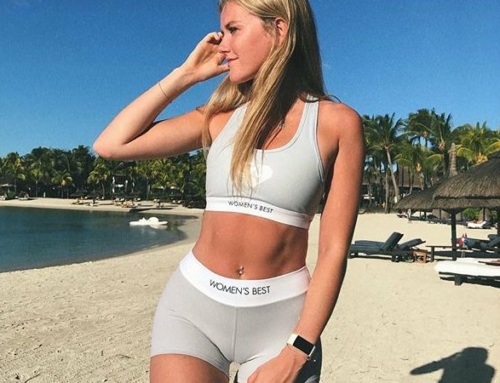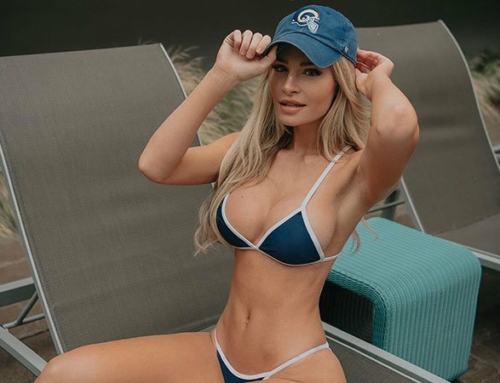6:10 PM PDT 7/7/2016 by Seth Abramovitch Seth Abramovitch
The L.A.-based painter says his painting of an African-American dad and his three kids “provides counterpoint to a lot of what’s going on in the country right now.”
This was supposed to be an unbelievably joyful week for Kadir Nelson. The L.A.-based artist, 42, was the subject of a glowing profile on CBS Sunday Morning, which likened his lush paintings of African-American subjects in idealized settings to the works of Norman Rockwell and N.C. Wyeth. The segment coincided with his latest effort, “A Day at the Beach,” which graces the cover of the New Yorker’s current double-issue.
It’s a striking oil painting of a handsome African-American dad and his three children enjoying a cloudless day by the shore. But that image took on tragic implications, however, in light of the recent killings of two African-American family men — Alton Sterling and Philando Castile — at the hands of police. Both incidents were captured on video, disseminated on social media and have shocked a nation. The Hollywood Reporter spoke to Nelson about his New Yorker cover and his own reaction to the dark news dominating headlines.
How did your current New Yorker cover come to be? It was actually intended for Father’s Day and was going to run a couple of weeks ago right around Father’s Day. But there were a number of news stories that took precedent like Hillary winning the primary and then Brexit. So it was pushed back and ended up coming out on the July 4th weekend. It was dated differently on the cover, but it was timely for that weekend.
What happens to the painting next? Do you sell it?This one I’m going to keep because it’s very sentimental. Usually I will sell my artwork but some pieces are very sentimental and I like to keep them.
If an average guy like me wanted to buy one of your paintings, how long do I have to save up? (Laughs.) I don’t know. Some of my paintings are really expensive, some aren’t as expensive. I’ve been at it a long time and I like to think I do quality work and that it’s priced appropriately.
People were retweeting the cover today and saying how much even more powerful and prescient the image is in light of the shooting deaths of Alton Sterling and Philando Castile.The two were unrelated. It was not a response to what’s going on in the news. It was really just a celebration of fatherhood and particularly my experience as a father. When I was a kid I really loved going to the beach with my family. Particularly my father was a really big swimmer. We grew up in Atlantic City so the beach was really a big part of my upbringing. My family moved from Atlantic City to San Diego when I was a kid, about 10 years old.
But the cover provides counterpoint to a lot of what’s going on in the country right now that we’re being bombarded with — these very unnecessary and tragic, heartbreaking experiences. I’m at a loss for words. These young men are losing their lives unnecessarily. In this day and age for this kind of thing to still be happening is heartbreaking. These are real people who have real families. Not only are they affected by what’s going on but all of us have to bear witness to it and we get to see a lot of it through social media immediately. A lot of us have cameras and can share what’s going on right away. It’s unfortunate and heartbreaking. That was kind of a lot of jumbled words, but those are my feelings. It’s kind of shocking because it continues to happen over and over again. When is it going to stop, you know?
Is the figure in the painting based on your own father?He’s based on me, actually. It’s a lot like me. Me and my kids. I’m divorced. My daughters are much older now but my son is about the age of the kid you see on the cover. It’s really a celebration of fatherhood and my experiences being a father.
Did you watch the press conference in which Alton Sterling’s son broke down?I can’t even watch it. One of the videos appeared on one of my social media feeds and I wasn’t even sure what was going on. Then all of a sudden it just exploded. I — I just can’t watch it. Too graphic and I don’t think it really should be so readily accessible on social media, but it’s gotten to that point where it is.
Does it gratify you at all to know the image on the cover of the New Yorker this week is giving people some comfort during this terrible time?I think it’s great to see something that’s the exact opposite to what we’re seeing in the media. But it also reminds us that these people losing their lives, particularly young men, are real people. They are families. Like the family you see on the cover of the New Yorker. It makes me think about myself and my family. Certainly I’m grateful to have children and be a father. As parents we worry about our kids and seeing what’s happening in the country is of great concern. Especially having a son. I have a young son and it gives me pause.
You cite Norman Rockwell as a major inspiration. His work provided such an idealized depiction of what America could be, as does yours. Can you remain optimistic about the country in light of what keeps happening?I always feel optimistic. When I painted the image of the African-American family on the cover of the New Yorker, I painted it as a celebration of fatherhood. And I’m proud of the New Yorker for putting that on the cover. But I also feel like an image like that can be on the cover of a magazine.
What is it about the painting that is so arresting, do you think?It’s just not what you would normally see — particularly a painted family with an African-American father, on the cover of the magazine, that’s a rare thing. That’s why a lot of people are excited and inspired by the image, because it’s not something you typically see. And it’s something we should all see. It’s an example of African-American fatherhood.
Source: Hollywood Reporter – Top Story





